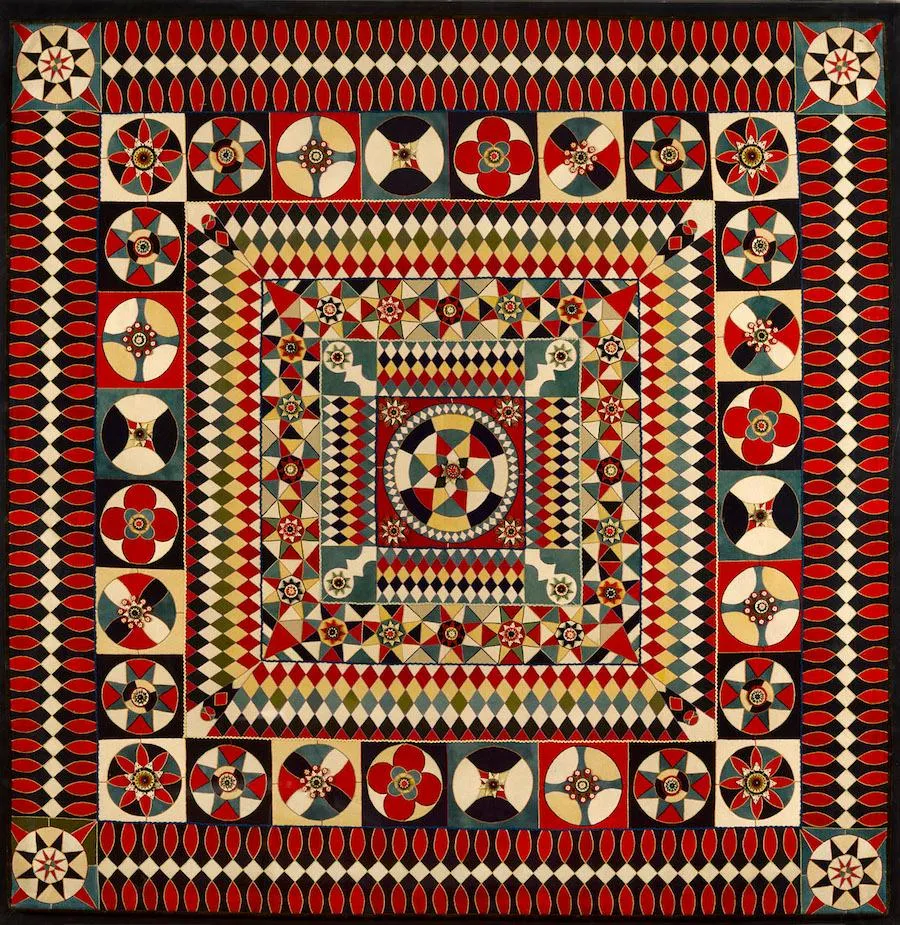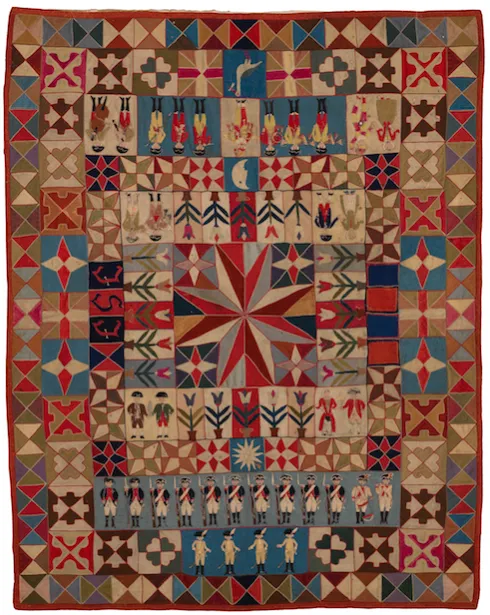The Centuries-Old Tradition of Military Quilting Is Getting Its First Exhibition in the U.S.
The display celebrates the art and craft of soldiers at war and offers insight into life in the military
When you think of quilting you may think about quilting bees, the 19th-century tradition that gave women a space to gather, or you may think about someone you know who quilts—like your grandmother piecing together art works in front of the TV. But while needlework has proud tradition among women, it has long been a space for men, too. The History Blog reports that soldiers and sailors, for example, have quilted for centuries to help them pass the time between skirmishes and to memorialize fallen comrades. Now, the first U.S. exhibit of some of these masterpieces is taking place at the American Folk Art Museum in New York this September.
The exhibition is called “War and Pieced: The Annette Gero Collection of Quilts from Military Fabrics,” and according to a press release, the 29 quilts on view come from the collection of quilt scholar Annette Gero, and include examples from Austria, England and the United States.
“What is extraordinary about the quilts in this exhibition is the range of techniques used and the painstaking detail in their creation, and the fact that they are made by men,” Anne-Imelda Radice, executive director of the American Folk Art Museum, says in the release. “Men, who are not usually raised learning the sewing arts, show both design acumen and manual dexterity as they sewed pieces of military uniforms, blankets, and other bits of discarded fabric into quilts of great beauty. These quilts offer an insight into military life and the need for creative expression even during times of war.”
The quilts, most of which have never been displayed in the U.S. before, include examples from the Napoleonic Wars, Prussian conflicts as well as British wars in South Africa and India. The quilts used to be known as “convalescent quilts,” since it was believed they were primarily made by soldiers recovering from injuries in hospitals, but recent research indicates that the best examples were likely made by bored soldiers in the field looking for a way to pass the time and keep out of trouble or by men in prisoner-of-war camps. The soldiers must have been very bored, indeed—some of the most complex examples contain up to 25,000 bits of fabrics, scavenged from old military uniforms and any bit of cloth they could find.
“Ordinary soldiers on active duty endured long stretches of boredom coupled with intense moments of terror overlaid with extremes of cold and heat, seeming endless toil and long separation from family and loved ones,” Gero tells Jasmin Dessmann at the Museums and Galleries of New South Wales. “As a form of ‘Trench Art’, these rare and surprisingly beautiful artifacts were made by soldiers during protracted lulls in the fighting, while recuperating from war wounds or else when interred in prisoner-of-war camps.”
One of the most impressive works of soldier-sewers not included in the exhibit is an altar frontal embroidered by 138 wounded soldiers during World War I. Created by injured men from the U.K., Canada, South Africa and Australia, it was first used during a mass of Thanksgiving at the conclusion of the war in July 1919. After the altar was destroyed during World War II, the embroidered piece went into storage but was put back in service in 2014.
While military quilting was relatively common, not many of the finished products survive, making every example precious. “There are fewer than one hundred of these quilts in the world, and no two are alike,” Gero says in the release. “The incredible beauty of these quilts is amplified by the facts of their creation. Stitched while recovering from the wounds of war or while interned in prisoner-of-war camps, the quilts show man’s determination to create beauty out of the fear and dread of war.”




